Tying the Surgical Ligature, Instrument Technique
With the short end away from you, position the forceps. Wrap the long end over, under, over, and then under the forceps. Pick up the end and pull tight to make the Double Throw Knot. Position the forceps again and wrap the long end across them. Pick up the short end. Pull tight to complete the Ligature.

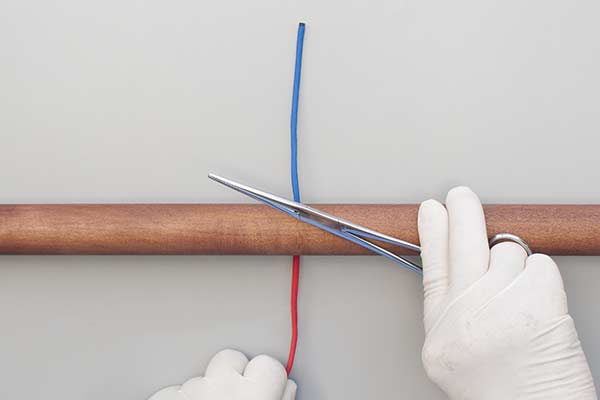
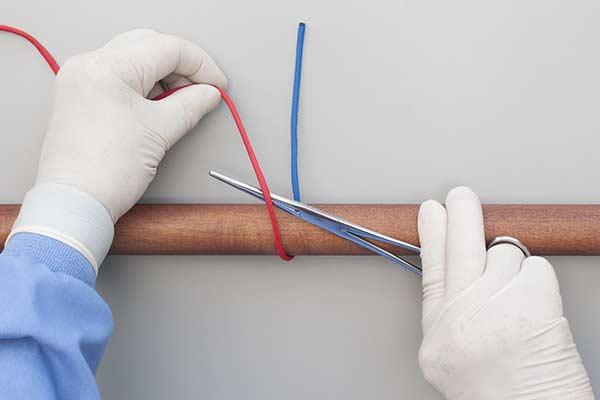
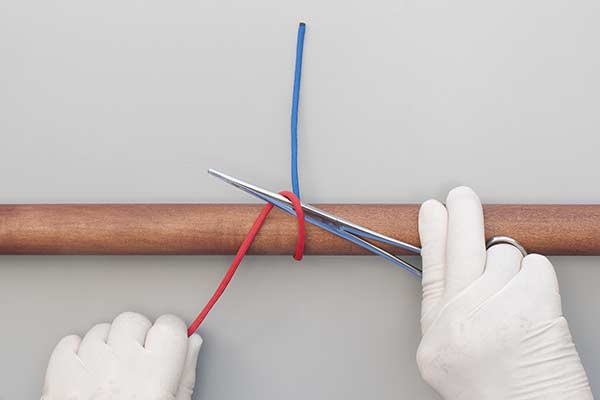
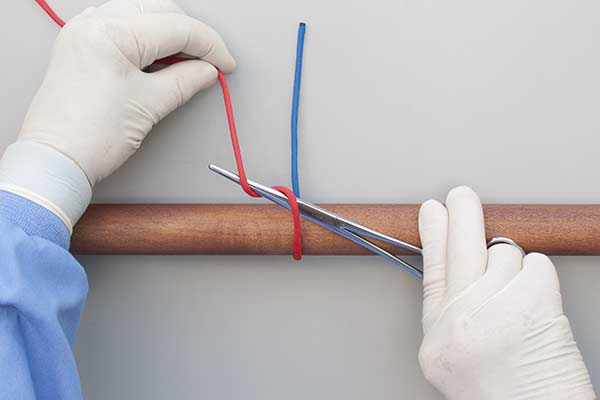
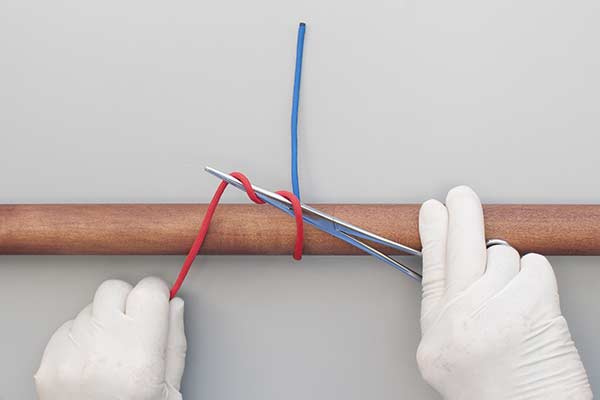

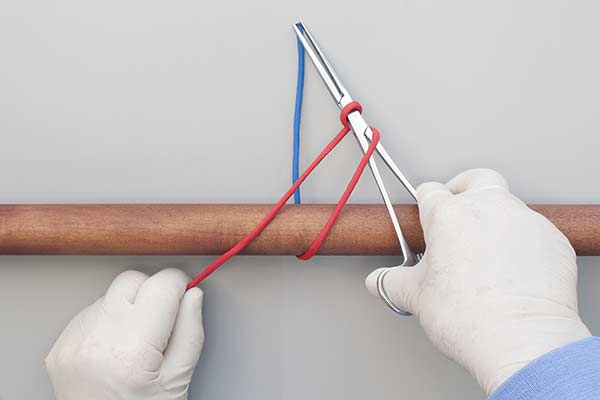
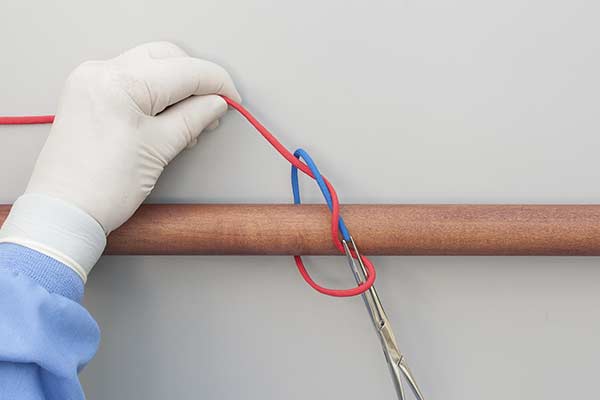
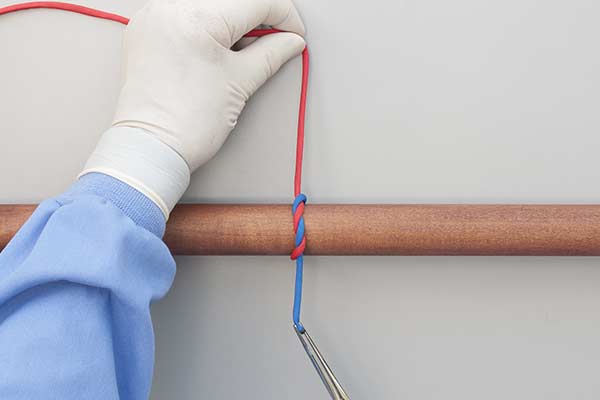
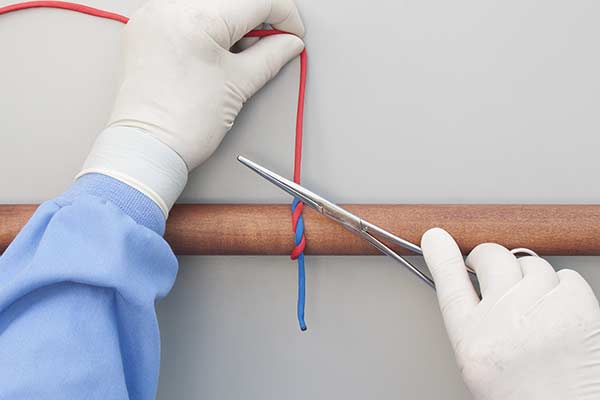
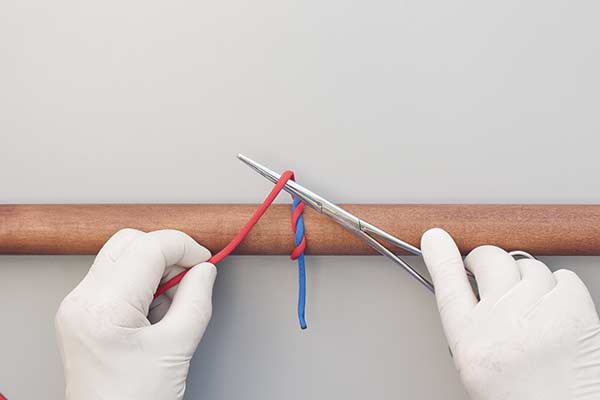
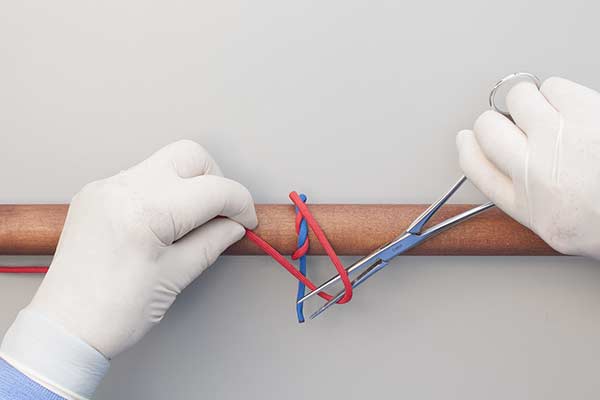
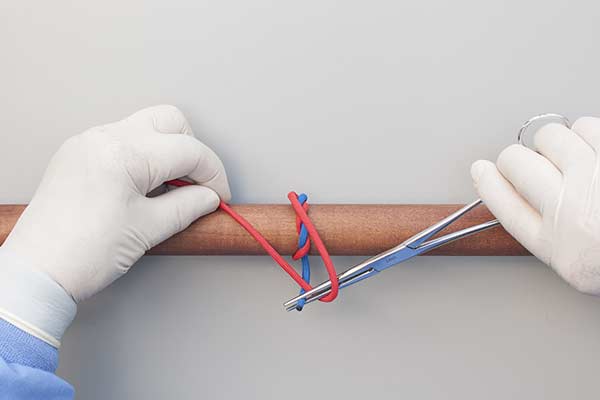
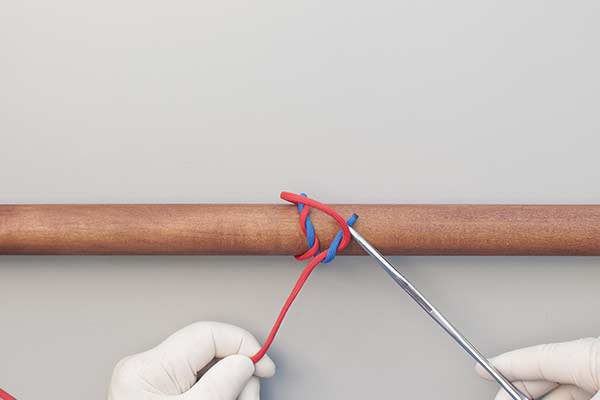
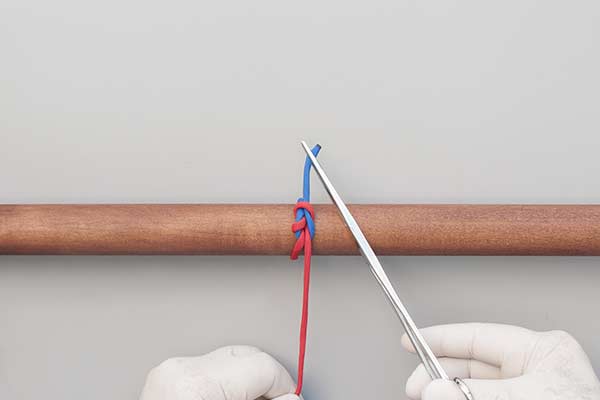
Surgical Ligature, Instrument Technique
Uses: The Ligature Knot (ABOK # 1209, p 221) is widely used in surgery because the added throw in the first Half Knot makes it more secure than the Square Knot. Ashley calls this technique the Aseptic Method - a tribute to days when gloves were not available, surgery was performed bare-handed, and an instrument would afford greater protection from wound infection (ABOK # 463, p 75).
Better Alternative: Recent experiments compared several ligatures suitable for use in surgery. They convincingly demonstrated that the Constrictor Knot had the best properties and was far less prone to slipping.
Techniques: This animation shows an Instrument being used to tie the knot. Alternative techniques include the One Hand and the Two Hand. The disadvantage of the Instrument version of the Ligature Tie is the difficulty of keeping the ends taut during the tying process.
Learning and Teaching: Most right-handed students will prefer the Normal view and left-handed students the Mirror view. An Instructor sitting opposite a student may find it helpful to use the Inverted or Rotated views.
Repetition: The sequence shown in the animation is usually completed with additional half knots to provide security. This precaution is appropriate because knots are unreliable and because the completed knot is often hard to see – it could comprise a stack of slippery Half Hitches instead of the intended Surgical Knot.
Reversing the Sequence: The animation shows the short end away from the surgeon. If the short end is towards the surgeon then tie the first Half Knot starting with Frames 11 to 15 but wind an additional wrap around the forceps. Follow this with Frames 2 to 4 and then pick up the end and pull to complete the second Half Knot.

